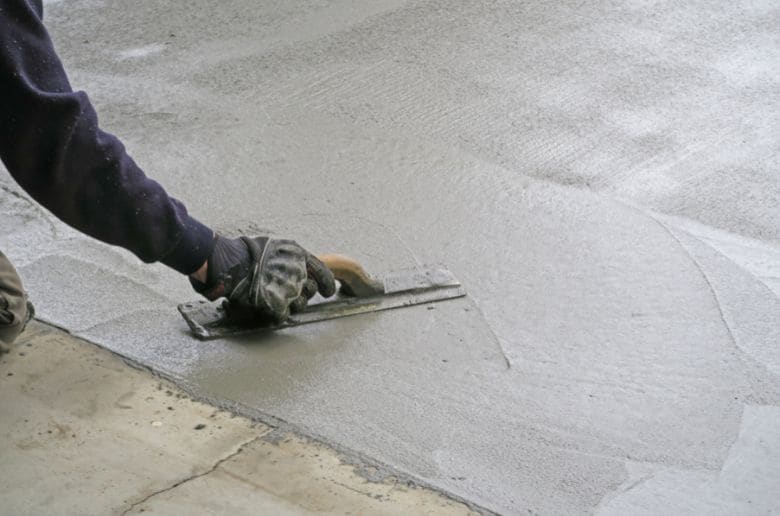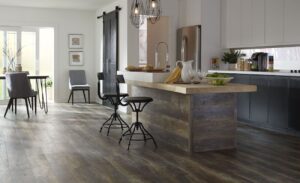When considering materials for construction, the debate between Surface Bonding Cement vs Stucco often arises.
Each has distinct properties that can affect the outcome of a project. Surface bonding cement is renowned for its strength and waterproofing capabilities, especially vital for exterior walls exposed to the elements. Stucco, on the other hand, offers a classic appeal and versatility, suitable for both exterior and interior finishes.
The choice between these materials can significantly impact both the aesthetics and durability of a structure.
Understanding their common uses and the significance of selecting the appropriate option ensures the integrity and beauty of construction endeavors for years to come.
Quick Comparison
| Feature | Surface Bonding Cement | Stucco |
|---|---|---|
| Materials | Glass fibers, acrylic additives | Cement, sand, water, lime |
| Appearance & Finish | Smooth, concrete finish; can be painted | Traditional finish; paintable; suits southwestern style |
| Usage Locations | Exclusively exterior | Interior and exterior |
| Ideal Usage | Waterproofing, strengthening block walls | Decorative coating for walls and ceilings |
| Drying Time | 24 hours; varies with weather | 48-72 hours; longer for multi-coat |
| Hydration Time | Min. 48 hours for strength | Min. 48 hours for strength |
| Durability | More durable with additives | Good; expandable with temperature to prevent cracking |
| Price | Approx. $10+ per sq. ft. | $5-$6 per sq. ft. |
| Composition | Acrylic, glass fibers for vertical applications | Cement, silica, lime, traditional and decorative |
| Application | Easy with premixed bags; 1/8″ to 1/2″ thickness | One or three coats; 3/8″ thickness for base coats |
| Additives | Acrylic fortifier, fiberglass | Varies; often none for standard mixes |
| Weather Resistance | Durable but less weather-resistant | Highly weather-resistant, manages moisture |
| Climate Suitability | Suited for earthquakes, intense heat | Preferred in extreme weather conditions |
| Architectural Style | Modern, minimalist designs | Mediterranean, Spanish, Tuscan styles |
| Design Flexibility | Uniform, sleek, limited color options | Color variety, moldable for decoration |
| Contextual Use | Seismic areas, high heat resistance | Coastal, high humidity for moisture management |
Key Differences Between Surface Bonding Cement and Stucco
Delving into the specifics, let’s compare Surface Bonding Cement vs Stucco to understand their unique attributes.
Composition and Material Breakdown
Surface bonding cement and stucco differ primarily in their composition.
Surface bonding cement is a fiber-reinforced blend, which often includes ingredients like Portland cement, glass fibers, and various additives that improve adhesion and reduce cracking.
In contrast, traditional stucco is a mixture of Portland cement, sand, lime, and water. The presence of lime in stucco provides a degree of elasticity which can be favorable in certain climates.
- Surface Bonding Cement:
- Portland cement
- Glass fibers
- Admixtures
- Stucco:
- Portland cement
- Sand
- Lime
- Water
Application and Installation Techniques
The application process for each material varies as well.
Surface bonding cement is typically used in a single coat applied over concrete blocks or bricks, reinforcing the entire structure. It can be troweled or sprayed on, allowing for a quicker installation process.
On the other hand, stucco requires a more labor-intensive application, usually involving three layers: the scratch coat, the brown coat, and the finish coat, each needing to cure before the next is applied.
- Surface Bonding Cement: Single coat, can be sprayed or troweled.
- Stucco: Three coats (scratch, brown, and finish), each requiring curing time.
Drying and Hydration Times
The drying time between these two materials is quite significant.
Surface bonding cement has a rapid set time, often drying within hours, while stucco’s layers need days to properly cure between applications.
The quick hydration time for surface bonding cement can be a considerable advantage in fast-paced construction schedules.
Important Note: Always consider the recommended drying times provided by the manufacturer to avoid compromising the material’s integrity.
Durability and Climate Resilience
Durability and climate resilience are where surface bonding cement shines due to its resistance to water and ability to fortify the structural integrity of walls.
It’s particularly beneficial in areas prone to severe weather conditions. Stucco, while durable, does not inherently strengthen the structure and may require more maintenance in harsh climates.
However, stucco’s traditional composition allows it to breathe, making it well-suited for arid environments.
- Surface Bonding Cement: High resistance to water, fortifies structure.
- Stucco: Good durability, requires maintenance in harsh weather, suitable for dry climates.
By examining these fundamental differences, it’s clear that the choice between surface bonding cement and stucco hinges on the specific needs of the construction project, be it durability, installation time, or climate considerations.
The preference should align with the end goal: whether one prioritizes quick installation and structural reinforcement or opts for a traditional, breathable finish suitable for drier climates.
Aesthetic and Practical Considerations
Evaluating the aesthetic and practical elements provides a fuller picture when selecting between Surface Bonding Cement vs Stucco.
Comparing Finish and Appearance
The final look of a building is crucial as it conveys the first impression. Surface bonding cement typically provides a smooth, monolithic appearance.
Its texture can be modified but tends to be more uniform. Stucco, however, offers a range of textures, from fine to coarse, and can be fashioned into various patterns or designs.
- Surface Bonding Cement: Generally smooth and monolithic
- Stucco: Variety of textures and patterns available
Architectural Style and Design Flexibility
Surface bonding cement, with its sleek finish, complements modern, minimalist architectures well.
Stucco is quite versatile—its texture options can match a plethora of design styles, from Spanish Colonial to contemporary.
- Modern Architecture: Surface bonding cement for a minimalist look.
- Diverse Architectural Styles: Stucco for versatile textural design.
Price Comparison and Economic Implications
A cost analysis reveals that surface bonding cement can be more cost-effective due to its single-coat application and minimal labor costs.
Stucco, while initially more costly due to its multi-layered application, can add value to a property because of its traditional appeal and perceived premium finish.
| Material | Initial Cost | Long-Term Value |
|---|---|---|
| Surface Bonding Cement | Lower | Moderate |
| Stucco | Higher | Potentially Higher |
Note: Prices can vary based on region and availability of materials.
Usage Location: Exterior vs. Interior
Surface bonding cement is mostly used in exterior applications, particularly for its structural benefits. Stucco is traditionally an exterior finish but can also be used inside for decorative features.
It’s essential to consider the environment; stucco may not be suitable for high-moisture interior spaces without adequate sealing.
- Exterior Use: Both materials are suitable, with surface bonding cement providing extra structural support.
- Interior Use: Stucco can be used for decorative purposes; surface bonding cement is less common indoors.
When weighing these considerations, one should assess the desired outcome in terms of both looks and functionality.
Each material has its strengths, and the selection process should reflect the project’s long-term objectives and budget constraints, ensuring that the choice made aligns with the envisioned result.
Which is Better? Analyzing Suitability and Performance
Selecting between surface bonding cement and stucco requires considering each material’s performance and suitability.
Ideal Usage Scenarios for Each Material
Both materials serve distinct purposes and excel in different scenarios.
Surface bonding cement is ideal for projects where structural strength is a priority, such as in the construction of retaining walls or as a reinforcing agent.
On the other hand, stucco is perfect for those seeking a decorative and versatile exterior finish that can be applied to various architectural styles.
- Surface Bonding Cement: Best for structural projects.
- Stucco: Preferred for decorative finishes.
Weather Resistance and Regional Suitability
The climate plays a significant role in choosing the right material.
Surface bonding cement is resistant to water penetration and ideal for wet climates, whereas stucco performs well in dry, warmer regions but may require sealing in areas with heavy rainfall.
| Climate | Surface Bonding Cement | Stucco |
|---|---|---|
| Wet | Excellent resistance | Requires sealing |
| Dry | Good performance | Excellent performance |
Longevity and Maintenance Needs
Surface bonding cement is low-maintenance and durable, often lasting the lifespan of the building with minimal upkeep.
Stucco, while also durable, may need occasional repainting and sealing to maintain its appearance and integrity.
- Surface Bonding Cement:
- Low maintenance.
- Long lifespan.
- Stucco:
- Requires repainting.
- May need sealing.
Important Note: Regular inspections can extend the life of both materials.
Professional Advice and Common Mistakes
Professionals often advise against DIY application of these materials unless one is skilled in their use. A common mistake is improper preparation of the surface before applying stucco, leading to premature cracking and detachment.
For surface bonding cement, an evenly mixed compound and correct water ratio are crucial for optimal strength.
- Consult Experts: To ensure proper application and avoid common pitfalls.
- Surface Preparation: Essential for stucco adhesion.
- Mixing: Critical for surface bonding cement’s effectiveness.
When considering which is better, it’s not just about the material—it’s about what is best for your specific project. We should weigh factors such as the environment, the building’s use, and the desired maintenance commitment.
By analyzing these aspects, we can ensure that the decision made serves both the immediate and long-term needs of the construction, thereby optimizing performance and satisfaction.
Conclusion
We have explored the unique attributes of Surface Bonding Cement vs Stucco, highlighting each material’s strengths.
Considering their impact on property value and lifestyle is critical; surface bonding cement adds structural integrity while stucco offers aesthetic appeal.
Our final recommendation for homeowners and builders is to choose based on the specific needs of their project and to seek further information and professional consultation to ensure a choice that aligns with both practical requirements and personal preferences.





